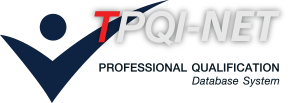หน่วยสมรรถนะ
Remove and install aircraft hydro-mechanical and landing gear system.
สาขาวิชาชีพการบิน
รายละเอียดหน่วยสมรรถนะ
| 1. รหัสหน่วยสมรรถนะ | AVT-XHBL-210A |
| 2. ชื่อหน่วยสมรรถนะ | Remove and install aircraft hydro-mechanical and landing gear system. |
| 3. ทบทวนครั้งที่ | / |
| 4. สร้างใหม่ |
|
ปรับปรุง |
|
| 5. สำหรับชื่ออาชีพและรหัสอาชีพ (Occupational Classification) | |
|
7232 Aircraft engine mechanics and fitters |
|
| 6. คำอธิบายหน่วยสมรรถนะ (Description of Unit of Competency) | |
| It requires the application of the commercial workforce skills and practical standards in the removal and installation of the system and landing gear components for hydro-mechanical aircraft mounted on both aircraft fixed and rotary wing during execution of scheduled or unscheduled maintenance. Maintenance can be performed individually or as part of a team. | |
| 7. สำหรับระดับคุณวุฒิ |
| 1 | 2 | 3 | 4 | 5 | 6 | 7 | 8 |
|---|---|---|---|---|---|---|---|
| 8. กลุ่มอาชีพ (Sector) | |
| 7232 Aircraft Mechanics | |
| 9. ชื่ออาชีพและรหัสอาชีพอื่นที่หน่วยสมรรถนะนี้สามารถใช้ได้ (ถ้ามี) | |
| N/A | |
| 10. ข้อกำหนดหรือกฎระเบียบที่เกี่ยวข้อง (Licensing or Regulation Related) (ถ้ามี) | |
| ICAO Doc 7192 / EASA Part 66 | |
| 11. สมรรถนะย่อยและเกณฑ์การปฏิบัติงาน (Elements and Performance Criteria) |
| หน่วยสมรรถนะย่อย (EOC) | เกณฑ์ในการปฏิบัติงาน (Performance Criteria) | รหัส PC (ตามเล่มมาตรฐาน) |
รหัส PC (จากระบบ) |
|---|---|---|---|
| 101313.01 Remove hydro-mechanical system and landing gear components. |
101313.01.01Removal of hydro-mechanical and landing gear components is carried out in accordance with the applicable maintenance manual. |
101313.01.01 | 199082 |
| 101313.01 Remove hydro-mechanical system and landing gear components. |
101313.01.02 Required maintenance documentation is accurately completed, and removed components are tagged, sealed and packaged in accordance with specified procedures. |
101313.01.02 | 199083 |
| 101313.02 Install hydro-mechanical system and landing gear components. |
101313.02.01 Components to be installed are checked to confirm correct part numbers, serviceability and modification status. |
101313.02.01 | 199084 |
| 101313.02 Install hydro-mechanical system and landing gear components. |
101313.02.02Required maintenance documentation is completed and processed in accordance with standard enterprise procedures. |
101313.02.02 | 199085 |
| 12. ความรู้และทักษะก่อนหน้าที่จำเป็น (Pre-requisite Skill & Knowledge) | |
|
101301 Interpret work health and safety practices in aviation maintenance |
|
| 13. ทักษะและความรู้ที่ต้องการ (Required Skills and Knowledge) | |
|
(ก) ความต้องการด้านทักษะ See Appendix A (ข) ความต้องการด้านความรู้ See Appendix A |
|
| 14. หลักฐานที่ต้องการ (Evidence Guide) | |
|
(a) Performance Evidence (b) Knowledge Evidence |
|
| 15. ขอบเขต (Range Statement) | |
|
This field allows for different work environments and conditions that may affect performance. Essential operating conditions that may be present (depending on the work situation, needs of the candidate, accessibility of the item, and local industry and regional contexts) are included. Components of hydro-mechanical systems include: Landing gear components include: Electrical interface includes: Procedures and requirements include: |
|
| 16. หน่วยสมรรถนะร่วม (ถ้ามี) | |
| N/A | |
| 17. อุตสาหกรรมร่วม/กลุ่มอาชีพร่วม (ถ้ามี) | |
| N/A | |
| 18. รายละเอียดกระบวนการและวิธีการประเมิน (Assessment Description and Procedure) | |
|
• The assessment are based on combination of paper exams, interviewing, and practical demonstrations depending on the assessors’ judgement. |
|
